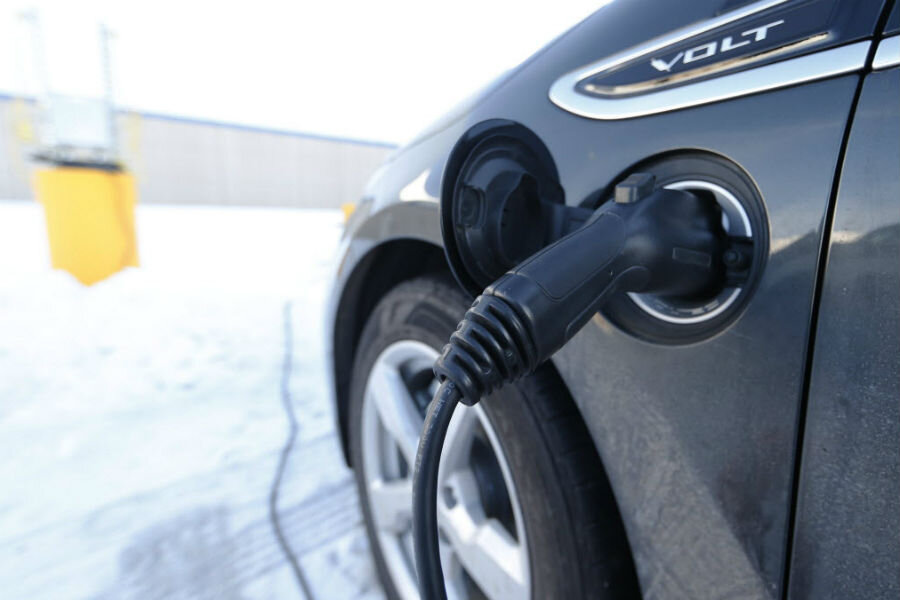Charge! Electric car drivers can now travel the US's busiest roads
Loading...
Owners of gas- and diesel-powered cars rarely have to worry about where their next fill-up is coming from. For drivers of electric cars, however, it’s a persistent concern.
With the possible exception of Tesla owners, who can tap into the company’s proprietary Superchargers network, electric car drivers are often limited to the range of the car. That means taking short trips, remembering to charge at home, and — in some cases — having a second hybrid or fossil-fuel-powered car at home to take on longer journeys.
A recent initiative may just have changed that. Last year, German car manufacturers BMW and Volkswagen partnered with ChargePoint, a Campbell, Calif. startup with offices in Arizona and India. Their goal? To install almost 100 high-speed charging stations for various electric vehicle (EV) brands along heavy-traffic routes.
“Our mission is to get everyone into an EV, and as the number of EVs on the road increases, we’re building features that ensure charging and driving an EV is a seamless experience,” Pat Romano, CEO of ChargePoint, told Ars Technica.
These charging stations are now up and running along two of the busiest stretches of highway in the US: the Northeast Corridor (along I-95) and the West Coast (on I-5 and Highway 101). That’s a particular gain for California drivers, who have been buying around half of the electric cars purchased in the US. It’s also an advantage for tourist destinations: the chargers have been placed along routes that branch off these highways, so that drivers can get to Cape Cod, Mass. or Lake Tahoe.
Though BMW i3 drivers get discounted charging for the first two years, the plugs are specifically designed to fit a range of brands, including the upcoming Chevy Bolt. Some charging stations even offer alternative connectors that work for cars like the Nissan Leaf.
The chargers are spaced at intervals of about 50 miles, and are located close to the highway, near rest stops, restaurants or other facilities. An app allows drivers to find charging stations and plan their route accordingly. The US Department of Energy also has a nationwide map of charging stations.
Not only that, but the new technology takes less time to charge your car. According to ChargePoint, the DC express chargers can provide a full charge in only half an hour. Charging cost varies by location, but is around $10 per charge on the two new routes.
By the end of 2018, the company plans to install more than 500 of these stations across 25 US cities. The list includes cities as diverse as Dallas, Salt Lake City, and Chicago.
The company estimates that drivers who use their stations have “saved over 17.4 million gallons of gasoline and avoided 128.9 million pounds of greenhouse gas emissions.”
The initiative is one of a range of efforts to encourage users to buy electric cars — and keep them on the road. In 2014, Nissan launched the “No Charge to Charge” program, offering LEAF buyers in certain markets two years of free public charging at over 2,600 stations. The state of Georgia had a tax incentive (ended by lawmakers in 2015) that gave a $5,000 tax credit to customers who bought or leased a new electric vehicle.







